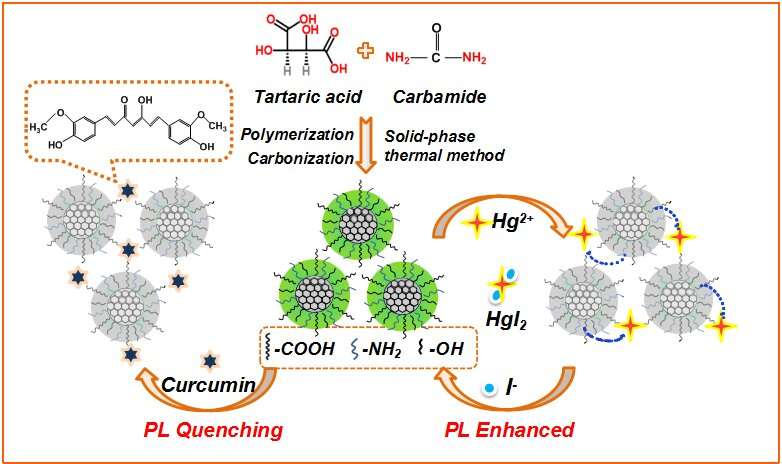How nitrogen-doped fluorescent carbon dots are aiding the fight against disease

The ability to reliably and accurately detect levels of iodide ion and curcumin is crucial in the fields of food and life sciences.
Iodide ion is an indispensable anion (negatively-charged ion) in living organisms, and plays a particularly important role in the synthesis of thyroid hormones. Having too much, or too little can lead to thyroid diseases.
Curcumin is a yellow-orange polyphenol compound derived from the rhizome of Curcuma longa L., which is commonly used as a spice, natural coloring agent and food additive. It is not only found in food, but in cosmetics and Chinese medicine. However, excess curcumin can cause DNA inactivation, lead to a decrease in intracellular ATP levels, and trigger tissue necrosis.
For a study published in the journal Bioactive Materials, researchers from China and the US developed nitrogen-doped fluorescent carbon dots (NCDs) as a multi-mechanism detection tool for iodide ion and curcumin in complex biological and food samples.
After testing various fluorescence options, the carbon dots were prepared using a one-step, facile, solid phase, environmentally friendly synthesis using tartaric acid and urea as precursors. No other reagents were added.
Compared with the other methods tested, the NCDs showed "remarkable sensitivity" according to lead author Professor Xiaodan Tang, of China's University of Science and Technology Liaoning. "They also showed superior sensitivity when compared to existing analytical methods for the detection of iodide ion and curcumin. The NCDs have a low detection limit and good selectivity. In addition, the cost of the raw materials is low, they are environmentally friendly and they display excellent water solubility, which helps with detection."
She adds that "their response makes them a promising prospect for the detection of iodide ion and curcumin in biosensing, disease diagnosis, food and environmental monitoring. Based on this study, our goal is to design and fabricate portable detectors in the future."
More information: Xiaodan Tang et al, Nitrogen-doped fluorescence carbon dots as multi-mechanism detection for iodide and curcumin in biological and food samples, Bioactive Materials (2020). DOI: 10.1016/j.bioactmat.2020.11.006
Provided by KeAi Communications




















